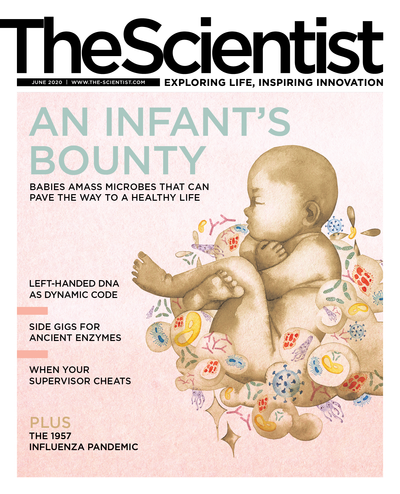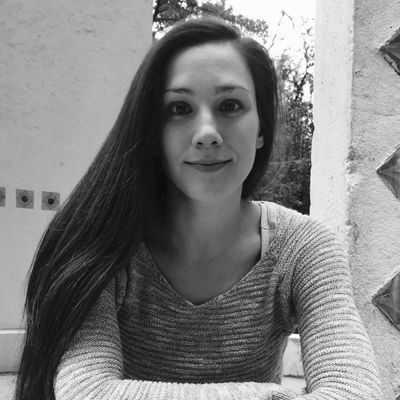ABOVE: To work out the details of her experiments, Janelle Ayres often writes on the glass windows of her lab.
© SALK INSTITUTE
Growing up in Livermore, California, Janelle Ayres kept all kinds of pets—rabbits, birds, fish, turtles, and her two favorites, Smokey the Siberian husky and Roman the German shepherd. She dreamed of becoming a veterinarian, but learning about genetics in high school led her to study molecular and cell biology at the University of California (UC), Berkeley. She then had to choose among vet school, med school, and a PhD program. Attending a talk by Stanley Falkow, whom she calls “the godfather of microbial pathogenesis,” helped her decide to pursue microbiology. “I loved the idea of host-microbe interactions,” Ayres tells The Scientist, “and that pathogens could be having such dramatic effects on the host’s biology.”
After graduating in 2002, Ayres moved to Stanford to work...
Wheat, for example, can tolerate certain pathogens without treatment, leaving Ayres to wonder: if plants could endure infections, did animals also have this disease tolerance? To investigate, she injected fruit flies with Listeria. All of the flies, whether they died or not, had similar levels of bacteria, indicating that pathogen load or an inability to eradicate the infection wasn’t what killed the insects. Ayres next analyzed the genetics of the flies and found tweaks in genes unrelated to the immune system that promoted tolerance of the infection. Animals, like plants, do tolerate disease, she showed.
See “Could Tolerating Disease Be Better than Fighting It?”
Working on that project, Ayres was “really engaged and thoughtful in a way that I now understand isn’t very typical” of graduate students, Schneider says. She finished her PhD in 2009 and returned to UC Berkeley for a postdoc in the lab of microbiologist and immunologist Russell Vance. Four years later, she opened her own lab at the Salk Institute for Biological Studies in La Jolla, California.
There, Ayres set out to investigate whether disease tolerance existed in mammals. She worked with mice, which tend to lose muscle mass after infection with Salmonella or Burkholderia thailandensis. And, just as in her earlier fruit fly experiment, she found that some mice experienced muscle wasting while others of the same strain didn’t, even when the animals had similar pathogen levels. It turned out that a particular strain of E. coli in the microbiomes of surviving mice had helped them tolerate infection. Giving that E. coli strain to infected mice as a probiotic protected them against muscle wasting (Science, 350:558–63, 2015).
“Janelle’s work is remarkably creative in identifying mechanisms of tolerance and really digging deep and trying to understand how the mammalian host . . . can actually withstand typical bacterial infections,” says Dan Littman, an immunologist at New York University who has tracked Ayres’s work. “She has the ability to really think around problems without being held back by the conventional wisdom in the field.”
In a 2017 Cell paper, Ayres and her colleagues showed that when Salmonella typhimurium infects a mouse, the bacterium uses an effector protein called SlrP to manipulate the animal’s gut-brain axis. The mouse continues eating as a result, whereas with other infections the animal would lose its appetite. This manipulation of the animal’s behavior promotes host health and survival, along with pathogen transmission, Ayres says.
In a more recent experiment, she and her team analyzed gene activation in genetically identical mice infected with Citrobacter. Mice that survived had increased expression of genes regulated by iron. When her team fed iron-enriched chow to a new group of infected mice, 100 percent of the animals survived, despite the pathogen’s persistent presence in their organs.
See “Infographic: Immunity Isn’t the Body’s Only Defense System”
“Every experiment seems to surprise us,” Ayres says, “and we’re committed to pushing this field forward.” The goal is translating the work into humans. When a patient is infected with a particular pathogen, she explains, “I want to be able to define how I can intervene and shift them back onto a trajectory to a healthy state.”
Interested in reading more?







